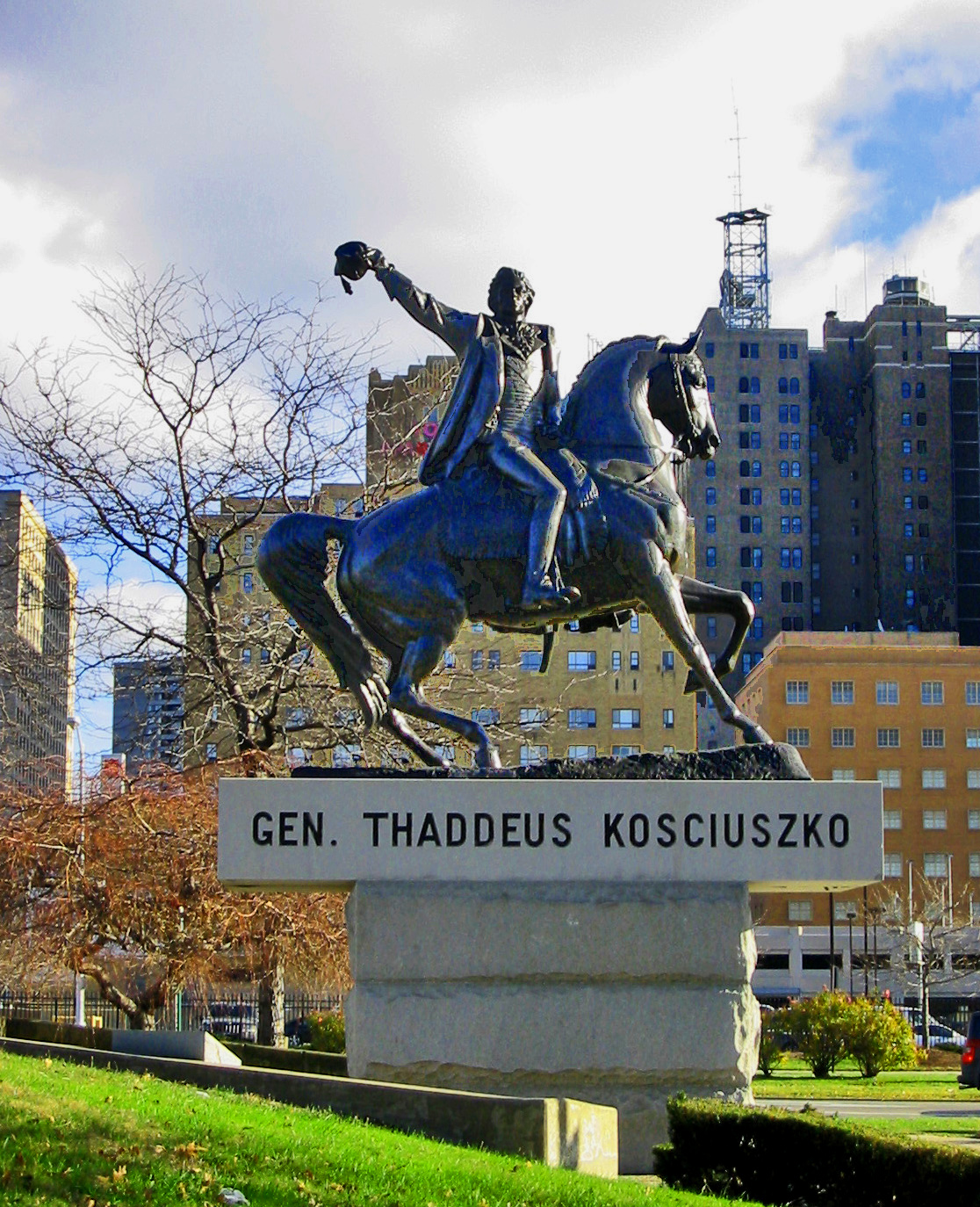

Detroit is graced with two marvelous but contrasting statues of war heroes mounted on horses. The Belle Isle statue of General Williams reminds us of the long and bloody campaigns that were necessary to preserve the Union and emancipate slaves. This statue of the Revolutionary War hero shows a triumphant leader.
On February 4, 1746, Tadeusz Andrzej Bonaventura Kosciuszko was born to landed gentry in the Polish province of Polesie. Seeking a military career, he first studied at the academy in Warsaw but in 1770, moved to Paris since the French were recognized as leaders in military engineering and strategy. Ideas of the Enlightenment and the rights of men were circulating among French and Polish intellectuals and scholars. Kosciusko read Thomas Jefferson's Declaration of Independence, was overwhelmed by the power of his ideas and rapidly sailed to the American colonies to fight for the freedom.
General Washington recognized his excellent training and employed him to design forts along the Delaware. Later, he was sent to fortify Fort Ticonderoga in upstate New York. His ideas were rejected and the fort was overrun. Kosciuszko moved south to Saratoga where he built another fort that played a key role in forcing British General Burgoyne to surrender with 6,000 British troops in fall, 1777. This was, arguably, the most important battle of the Revolution since the British losses were so substantial that the French began supporting the colonists.
Kosciuszko moved further south to West Point where he built another large and strong fort, so strong that the British did not challenge what he built. He also designed a 60-ton chain that was strung across the Hudson River at West Point to make it impossible for British ships to traverse. By 1780, Kosciuszko had joined General Nathieniel Greene in the Carolina campaign where he not only used his engineering skills, but led troops.
After the Revolutionary War ended, Kosciuszko returned to Poland. In the early 1790's, the Polish tried to fight for their freedom but lost. In 1792, Kosciuszko led an uprising now know as the Kosciusko rising. He gave Poland a Constitution and briefly led the independent country. However, this war was unsuccessful. He was wounded 17 times as the Russians defeated the Polish forces at Maciejowice. Kosciuszko was captured and imprisoned by Czar Paul for two years, but then given amnesty under the condition that he never return to Poland. US history books stress the important role that the French provided in the Revolutionary War. At the same time that the French and the American colonies were changing their governments to emphasize the rights of man, the Polish were seeking independence. The contributions of Poles to the American Revolution are sometimes overlooked, although monuments to Kosciuszko are found in most cities with a substantial population. On Washington Boulevard in Detroit, you will find a statue commemorating the contributions of Count Casimir Pulaski, another Pole who came to the America and fought with great distinction for this nation's freedom after unsuccessfully leading Polish troops against the Tsar.
When the Tsar granted amnesty, Kosciuszko immediately came to the United States where he sought both medical treatment and back pay from the military. Congress appropriated $15,000 and granted him 500 acres along the Scioto River where Columbus is now located. Kosciuszko wished to return to his native land. He returned to Europe and in 1806, Napoleon asked him to help lead French troops into Poland. He turned down that opportunity and died in exile in Solothurn, Switzerland in 1817.
This cast statue is the work of the Warsaw-born Italian-Polish sculptor, Leonard Marconi. It was cast in 1889 for the grounds of the Wawel Castle in Krakow. To honor Detroit on the bicentennial of the United States, the city of Krakow had the statue you see cast and then donated it to the city.
Sculptor: Leonard Marconi
Date of original casting: 1889
Date of the establishment of this copy: 1978
Materials: Granite and bronze